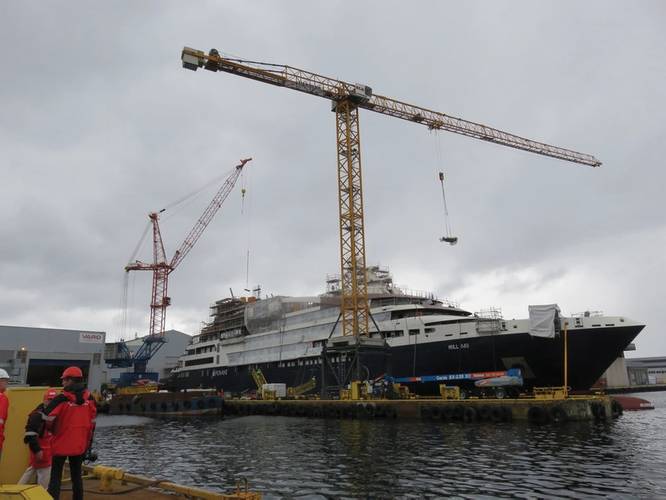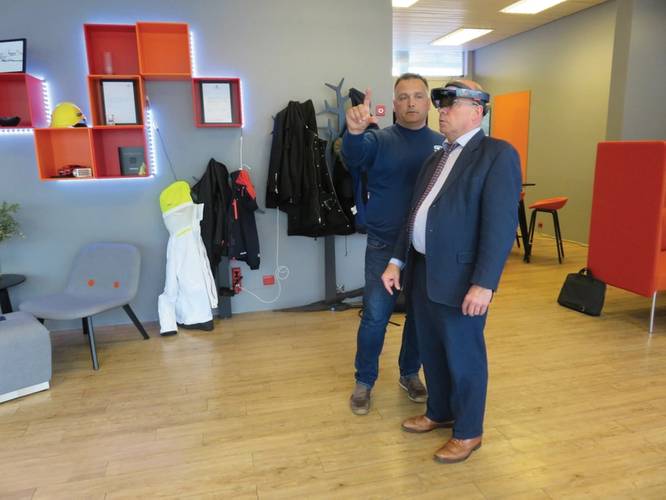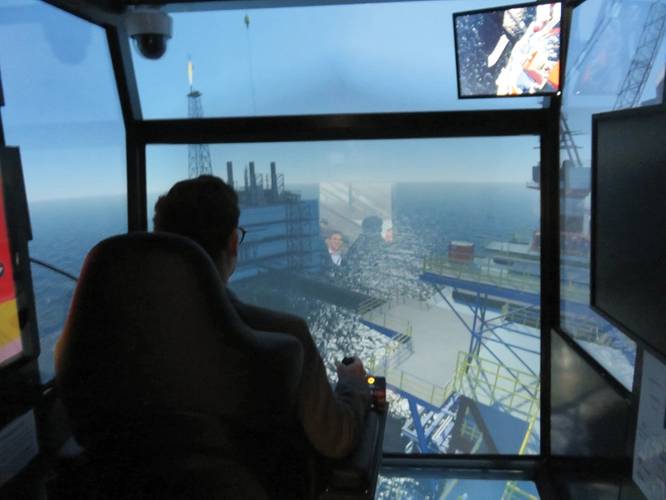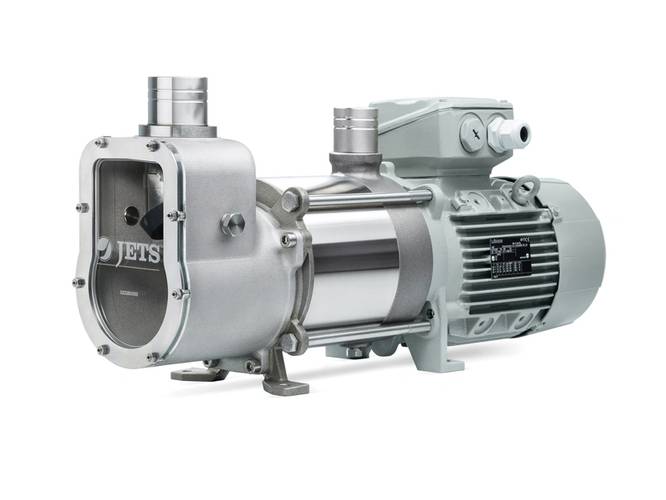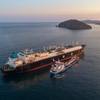Norwegian Marine Tech: In the Driver’s Seat
Earlier this summer Maritime Reporter & Engineering News ventured to Ålesund/Sunnmøre area of western Norway visiting local manufacturers and suppliers serving the global maritime industry and featuring a series of business and technology presentations by leading sector companies including Inmarsat, VARD Group, Ulstein Group, Brunvoll, Ulmatec, Jets, ABB Marine & Ports, Fostech AS and Rolls-Royce Marine. Tom Mulligan reports on new business developments and technology innovations that are set to shape the future of the maritime sector.
The Internet of Things
An initial ‘port of call’ was the local Norwegian offices of Inmarsat, a specialist in the provision of global mobile satellite communication services. The company’s presentation focused on its Inmarsat Research Program, now in its second year, which looks at understanding the ways the Internet of Things (IoT) is affecting the global supply chain and the way in which organizations in a range of industry sectors, including maritime, operate.
In a survey commissioned by the company in May of this year, 750 respondents, including 139 from the maritime sector, were asked about their use of, attitude to and predictions for IoT within their organization and industry, including about their IoT development in six key areas: adoption, security, connectivity and IoT technologies, skills, data, and investment. In terms of adoption, the survey concluded that the maritime sector included a high number of companies it classed as ‘leaders’ but also a significant number of ‘laggards’. Seventy percent of maritime respondents said that cutting insurance premiums was one of the most important drivers of the adoption of IoT-based applications, however it was also found that the sector was considerably lacking in the skills required for IoT adoption. Forty-two percent of respondents believed that their organization would benefit from additional IoT skills.
Regarding security, most maritime respondents were classed as ‘starters’, with 87 percent believing that their data-handling processes could be improved. Similarly, the vast majority were classed as starters in IoT data usage, 43 percent of them saying that they were using or would use such data to improve health and safety standards. Most respondents were adapting well to the connectivity requirements of IoT, with very few laggards, a considerable number of starters and progressives, and a significant number of leaders, fifty-one percent ranking satellite connectivity as ‘number one’ by usage. Finally, most of the maritime respondents were classed either as starters or progressives when it came to IoT investment, with their average predicted cost savings achieved through the adoption of IoT solutions expected to be about 14 percent.
VARD: Luxury Expedition Cruise Deal
Next it was off to visit Norwegian shipbuilder VARD. The company recently secured a contract for a luxury expedition cruise vessel for cruise company Hapag-Lloyd Cruises. The new vessel will join the company’s HANSEATIC series, together with the two vessels that VARD already has under construction for the German company. The vessels are specially designed for cruises in polar regions in the Arctic and Antarctica, as well as operations in warm-water destinations such as the Amazon.
The new vessel will have a gross weight of about 16,000 tons, a length of about 139 meters and width of 22 meters and it will have seven passenger decks with accommodation for 230 passengers in 120 cabins and suites. Similar to its sister vessels, the ship will have high-standard facilities, including a wa-ter sports marina and modern spa and fitness areas. Delivery of the new vessel is scheduled from Vard Langsten in Norway in 2Q 2021. The hull will be built by VARD in Romania.
More Shipbuilding
Ulstein Group’s headquarters at Ulsteinvik was the venue for a series of presentations by the company and its suppliers. Ulstein has signed a shipbuilding contract with a German company, Bernhard Schulte, for an SOV of the ULSTEIN SX195 design type developed by Ulstein Design & Solutions. The vessel will support the maintenance work of GE Renewable Energy at offshore wind farm Merkur Offshore in Germany. The project was developed in cooperation with Bernhard Schulte affiliate WINDEA Offshore.
The SX195 design of the vessel has been modified to fulfil GE Renewable Energy’s tender requirements and the shipowner’s particular mission equipment needs. It has a large, centrally-positioned ‘walk to work motion’ compensated gangway and elevator tower for personnel and cargo transfers and a 3D compensated crane capable of two-ton cargo lifts is included. The optimized on-board logistics includes large storage capacities, of which half is under roof in a controlled environment, and a stepless approach to offshore installations. The vessel is also equipped with a fuel-efficient drive system that includes a battery-solution from Ulstein. With all main equipment and operations in the aft ship, the vessel will naturally operate astern while in-field in areas such as operation and maintenance or construction support, avoiding slamming, noise or vibrations caused by waves, especially in challenging weather and sea conditions.
Marine Power
Propulsion, positioning and maneuvering equipment specialist company Brunvoll is one of Ulstein Group’s main suppliers and its Brunvoll Volda subsidiary recently delivered an extensive propulsion and maneuvering equipment package to Ulstein Group company Ulstein Verft for Color Line Marine’s new hybrid Ro-Pax ferry, which is currently known as Color Hybrid. The hybrid propulsion system is a twin-screw gearbox and cp-propeller system with PTI/PTO for a combined electric motor/generator designed for a combination of diesel-mechanical, electric- or battery operational modes. In addition, the rudder is integrated with the propeller and hull for optimal fuel efficiency and the thruster package consists of two FPP tunnel thrusters and an RDT permanent magnet driven tunnel thruster. The delivery also contains control systems for propulsion, positioning and maneuvering.
Waste Energy Recovery
Ulmatec (Ulstein Marine Technology AS), a descendant of Ulstein Mek Verksted, the origin of Ulstein Group), operates a number of subsidiaries, including waste energy recovery specialist Ulmatec Pyro. The company has recently been developing systems for use in exploration vessels and works on the premise that the majority of the heat lost from a combustion engine can be captured and re-used for a number of purposes including the heating of accommodation, sanitary hot water, heating swimming pools, producing fresh water, tank heating, HFO pre-heating, tank washing, de-icing and the pre-heating of engines in standby mode. In addition, new technologies are being developed for generating electricity from waste heat and for the cooling of accommodation: these developments offer considerable potential fuel savings for exploration cruise vessels, which can have an average heat demand of about 800 kW when operating in cold climates.
Ultra-low-water-consumption Sanitary System
Ulstein Group supplier Jets has launched its new Jets Edge vacuum sanitary system. Sanitary systems on ships worldwide were revolutionized when the company launched the first Vacuumarator pump onto the market in 1989, as this was a much more compact, efficient and reliable piece of technology than any previous system. Jets further cemented its position as a leading vacuum sanitary systems supplier with another significant milestone in 2000 when the modern version of the Vacuumarator pump was released. Its benefits included in-line vacuum generation, no foaming, a fully integrated macerator, no need for a collecting tank, a more compact size than before, simple and flexible installation, easy retrofits, and very low energy consumption. Now, by refining the technology, Jets is able to present the company’s newest Vacuumarator pump, Jets Edge.
The system has very low water consumption, thereby meeting growing concerns about water shortages worldwide. In addition, testing has shown that the Jets Edge is more energy efficient than its predecessors, making it an attractive technology from an environmental point of view.
The Jets Edge comes in two versions: the EdgeM01 and the EdgeM01-D, which is especially designed to handle larger volumes of fluids. The Jets Edge can be used in ships, yachts, cabins, and trains: anywhere a compact, high-capacity and low-energy sanitary system using a minimum of water is needed.
Power, Automation & Propulsion
ABB Marine and Ports has a global presence, employing 1800 marine and 300 port professionals at 35 service stations in 23 countries worldwide. The main marine markets of the business include the cruise and ferry, offshore, ice-going, cargo and specialized vessel sectors, where it supplies propulsion products, electrical systems, automation and software, and integrated operations, while for ports it serves bulk and container terminals with automated bulk and container handling and provides electrification and IT as part of its port infrastructure and shore-to-ship power service.
ABB will deliver a comprehensive package of power, automation and propulsion solutions for a new Linblad Expeditions Holdings polar expedition vessel being built by Ulstein Verft, including its main propulsion units, tunnel thrusters, distribution transformers, a drive system and switchboards. In addition, German shipbuilder MV WERFTEN has ordered ABB propulsion, automation and marine software for five new vessels for Genting Group cruise operators Crystal Cruises and Star Cruises, all five featuring ABB propulsion, with three Crystal Cruises ships being powered by two Azipod D units each, and two Star Cruises ‘Global Class’ ships being powered by three Azipod XO thrusters each. All five ships will have an ABB electric power plant and automated system installed, as well as the OCTOPUS ABB Ability Marine Advisory System.
In another contract, a Ritz-Carlton Yacht Collection vessel to be built at H.J. Astilleros Barreras in Spain and set to sail in 2019 will be provided with Azipod DO propulsion systems, generators, a main switchboard, bow thruster motors and starters, and an ABB Integrated Automation System.
The world’s first luxury-cruise icebreaker ship, Le Ponant Icebreaker ICEBREAKER, which will be built at the Vard Søviknes yard in Norway and is scheduled to set sail in 2021, will be provided with ABB generators, switchboard, propulsion transformer, propulsion units, tunnel thrusters, batteries and remote control system.
Augmented/Mixed Reality & Maritime Ops
Fostech AS was established in October, 2015 and has office locations in Fosnavaag and Ålesund. The company develops augmented and mixed reality solutions with the goal of adding value for maritime customers by improving quality, safety, productivity and customer profit. In a fascinating session, company CEO Harvard Notøy demonstrated how these technologies work, with a specialized viewing system that shows a 3D image of, for example, a ship or a ship’s engine, which the viewer can move around by physically moving around the room while at the same time being able to expand the image for a more in-depth view by clicking his fingers. Such a system can be used to assist maintenance staff, for example, and includes menus that instruct mechanics and engineers on how to successfully carry out maintenance operations. The technology is adaptable for a wide variety of other applications (for example, medical surgery) and is set to become the industry standard for guiding the performance of a wide range of industrial operational procedures.







